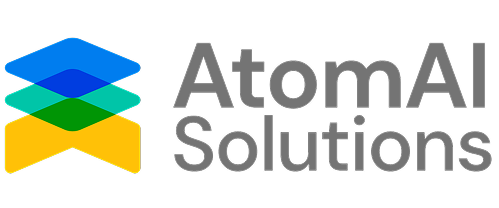Artificial Intelligence (AI) is no longer just a buzzword in Silicon Valley—it’s rapidly transforming the way government agencies operate, serve citizens, and manage critical infrastructure for our citizens. From local municipalities to massive federal departments, AI is injecting efficiency, intelligence, and automation into traditionally slow-moving government systems and processes.
So, what does the AI revolution really look like in the public sector? Let’s break it down.
Smarter Infrastructure and Asset Management
Government agencies are responsible for managing vast networks of physical assets—roads, bridges, buildings, signals, vehicles, and more. Traditionally, maintaining and tracking these assets has relied on reactive workflows and outdated tools.
Now, platforms powered by AI (like AtomAI) are helping agencies shift to predictive maintenance, automated inspections, and real-time performance insights. AI can identify patterns of degradation, suggest when to repair vs. replace, and even detect issues from images and sensor data before humans ever file a report.
Automating Administrative Bottlenecks
Clerical tasks and manual data entry eat up a huge portion of government work hours. AI is helping reduce that load. Whether it’s answering routine public inquiries through chatbots, generating reports, or sorting through large document sets to find relevant content, AI is freeing up human workers to focus on higher-value work.
Some agencies are even experimenting with new tools like “Ask Atom”, a built-in AI assistant that lets staff search, analyze, and retrieve data from government platforms using plain language—no IT ticket required.
Enhancing Public Services and Citizen Engagement
AI is helping governments become more responsive and citizen-friendly. Virtual assistants can help residents report issues, pay bills, or navigate city services. Machine learning models can analyze 311 complaints or traffic data to optimize city operations in real time.
This not only improves citizen satisfaction but also gives governments a clearer, more actionable picture of what their constituents need.
Supporting Policy and Budget Decisions
AI doesn’t just automate—it informs. Agencies are increasingly using AI to simulate outcomes, analyze budget impacts, and guide policy decisions. By feeding historical data into intelligent models, government leaders can better forecast costs, model infrastructure lifespan, and align resources with performance-based outcomes.
In other words: decisions aren’t just based on politics or gut instinct—they’re backed by data.
The Challenges: Trust, Ethics, and Transparency
Of course, integrating AI into the government isn’t without hurdles. Concerns around data privacy, algorithmic bias, and transparency loom large. Public agencies must be especially diligent in choosing ethical AI tools that prioritize explainability and auditability.
This is where trusted, purpose-built platforms with strong governance models come into play. AI in government must be useful—but also accountable.
Final Thoughts
AI is not just reshaping government technology—it’s redefining what’s possible. As more public agencies adopt AI tools, we’ll see faster service, smarter infrastructure, and better use of taxpayer dollars.
But success hinges on thoughtful implementation, ethical oversight, and user-friendly design. The winners in this space won’t be those with the flashiest tech, but those who build trust, drive impact, and meet public needs head-on.
GovTech is evolving, and AtomAI is leading the way. To learn how AtomAI can support your organization’s transformation, contact us at sales@atom-ai.com



